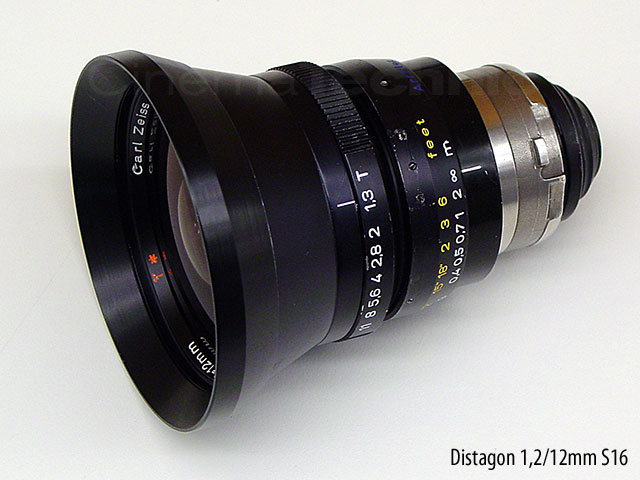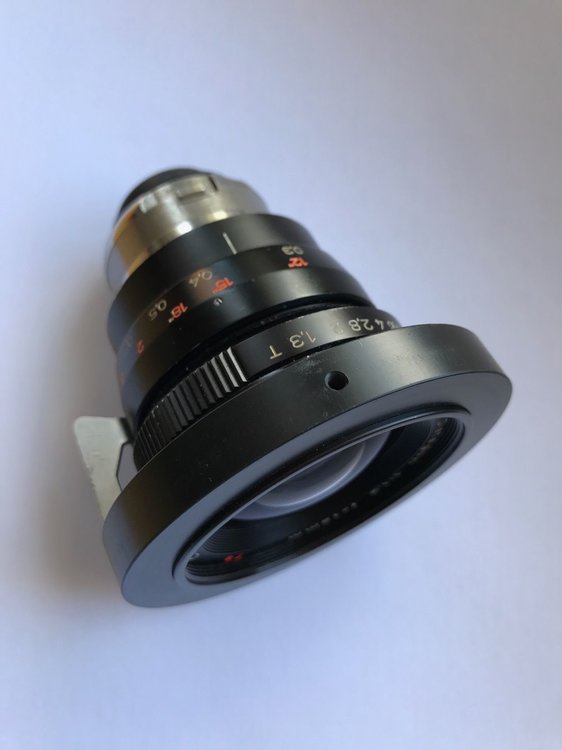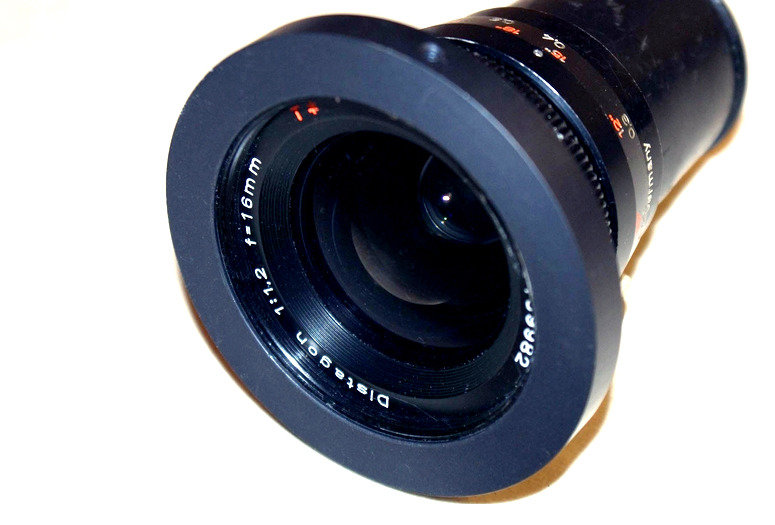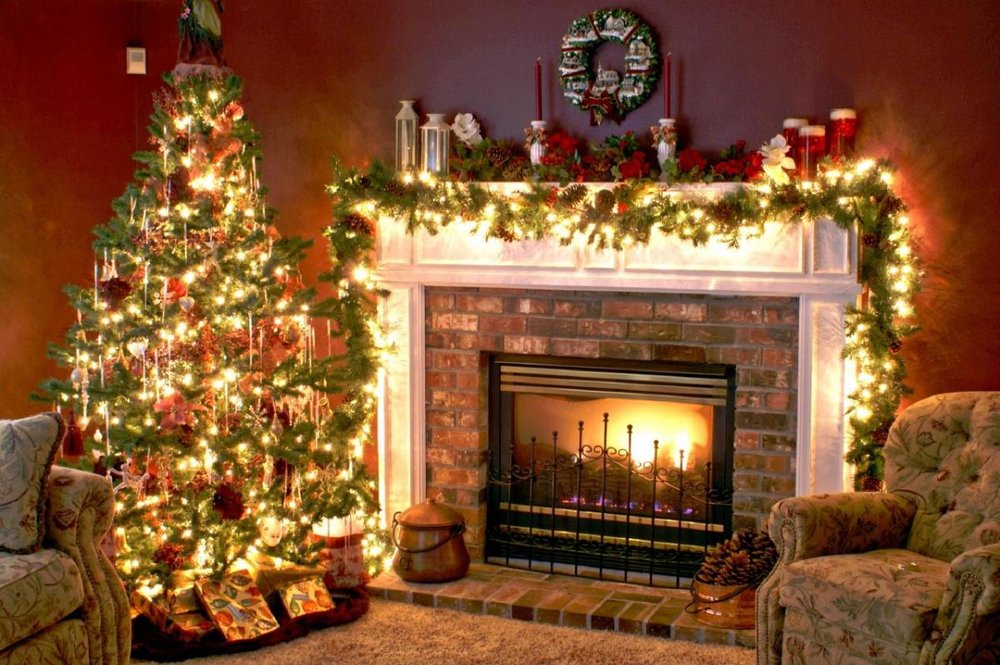
Julian Fletcher
Basic Member-
Posts
49 -
Joined
-
Last visited
Everything posted by Julian Fletcher
-
Hi, I am looking for a cost effective service to process and scan family movies I shoot with my Bolex Super 16mm. Anybody had any experience with these guys with their in house processing and their Muller scanner, before I give them a try? Scanning - Gauge Film Cheers Julian
-
Hi All, despite getting some wonderful footage, i'm hanging up my Bolex SBM temporarily and freeing up my freezer of some unused film, all listed on the large auction site. There's 100ft loads of Vision 3 50D, Vision 3 500T, Vision 2 200T, Fuji 64D and some Fuji Eterna 250 as well! All selling with no reserve and 1 penny starting bid. Its been kept ice cold in the fridge freezer from day 1, but obviously sold as seen. Link attached to the 50D sale, and the rest are under my listings.Trust this is OK to post, many thanks. https://www.ebay.co.uk/itm/100ft-Kodak-16mm-Vision3-50D-7203-Colour-Neg-Film-Stock-NO-RESERVE/143303603307?hash=item215d8f746b:g:DO4AAOSwK0ldDRFv
-
Hi, have been researching a few of the film scanning companies out there, and a few of them are offering 2k and 4k film scanning of super 16mm. I have found that at say 2k and certainly at 4k, the whole negative would get scanned (is this overscan?) - i.e. outer edges, sprocket holes etc - and therefore you would have crop the image out. Does this mean that the image you are left with is not technically 2k (or 4k) resolution anymore? If so is it deemed to be an unacceptable practice when a company is advertising the scan to be 2k or 4k, and how do you ensure it does not happen? To be fair, have found this more so with the sorts of companies using scanners like a Fabriek Mueller HDS vs say a Spirit or Arriscan. Would love to have your thoughts, Best Regards, Julian
-
Hi, thanks for the reply. I have sent them an email to their general inbox, but will try Martin for sure if I don't hear back. Glen - thanks for the reply, with the Frame24 package, may I ask what sort of scan you got with the package, with no additional charges? I used this package with Cinelab a couple of years ago and had to pay extra for a 2K scan. I checked it today and it said 'best light transfer to HD (apple Pro Res) or 2K Scan' - so seemingly one or the other. Its not clear whether the 2K Scan attracts a surcharge. What did you get? Cheers
-
Hi, I have about 1000ft of bolex home movie super 16mm that I'd like developed and telecine to a quicktime, really just to check the footage. Does anybody have any experience with these guys? They are based at Pinewood so I assume I (or a courier) just passes through the gate and drops it off? Alternatively, does anybody know of any UK based companies that could do a similar job - they are mixed films, so 50d and some 500t all on 100ft reels. Like I said, just looking for developing and telecine to a quicktime. Am very much on a budget!! Many thanks for your help Best Regards Julian
-
https://www.ebay.co.uk/itm/142622089151?ssPageName=STRK:MESELX:IT&_trksid=p3984.m1555.l2649
-
Many thanks - great info. I am thinking about acquiring one for use on my Bolex H16. I can get a PL to C mount adapter. Do you think I would see a distinct benefit in sharpness vs a) using my Nikon Zeiss ZF lens (designed for 35mm) b) Switar 16mm bolex lens. (I shoot at f8 most of the time, so any effect due to the prism issue will be neglible). Thoughts?
-
Hi, I am considering this lens for Super 16mm format. Obviously the focal length is 16mm, but does anyone know if this lens was designed for the 16mm format, or just a generic 16mm focal length lens and marketed as interchangeable for 16mm/35mm formats. I know that some Zeiss lenses have "Arriflex 16" / "Arriflex 16mm" / "Arriflex Super 16" engraved on them - this one just has "Arriflex" engraved. I am told that a lens designed especially for the 16mm format will be everso slightly sharper as it needs to project a sharp image on a smaller area - than say the same lens designed for 35mm format. The lens is Zeiss Distagon 16mm T* t 1.3 It is PL mount. The guy who has it for sale said that he used it on his SR2 on super 16. I have found some pics online of the lens (one is a 12mm, but is visually the same). It has a big silver metal lever or stick coming out of the side. I don't think this a mk1 super speed? The important thing for me is whether its a native 16mm format lens or not. Your help is very much appreciated. BIG THANKS! Cheers Julian
-
Hi All, I am so pleased that I found this forum. Apart from Frame 24 and Widescreen Centre, where do you buy 16mm film stock in the UK? The best price I can find for 100ft is just under £40 and that's at Frame 24. Any advice and tips would be much appreciated. Cheers Julian
-
Hi All, I am in the UK and currently get my Kodak Vision 3 16mm stock from Frame 24. 100ft is £36 and 400ft is £108, plus shipping. This is certainly cheaper than what Widescreen Centre is charging. My Bolex takes 100ft loads, so even if I stripped down a 400ft can into 100ft reels, the saving is peanuts really. Apart from getting lucky on ebay and/or getting recans or short ends, has anyone found a better cost for new 16mm stock in UK or Europe? I only get through about 2000ft per year, but its getting a very expensive hobby these days! I saw that B&H photo in New York sell 100ft for $48 which is about £40, so is this the going rate for film these days? All comments / help very welcome! Many thanks Julian
-
Here are my thoughts talking from bitter experience > Yes, is possible to use Nikon 35mm F mount lenses with a Bolex, but they are a major pain in the butt for a few different reasons. > Picture quality is pretty good and sharp, but always not as sharp as dedicated super 16mm lenses. > Bolex prism issue has practically zero effect from f5.6 upwards and also on lenses 35mm and above. In sunlight, I tend to shoot 50d at f8 mostly. > Major issues are crop factor (e.g. 50mm lens designed for 35mm is telephoto field of view on the bolex) and focusing. Focusing is a problem anyway due to the Bolex' very dim viewfinder, but made worse by the very short focus throw of these lenses. Manual focus 35mm lenses were developed with split image rangefinder focusing aids in mind, so on certain lenses you can rotate the barrel by 1mm and you are out of focus. > Using wider lenses at f8 to f11 helps the depth of field. I used Kodak's DOF calculator app - but remember, the lens has the depth of field not the camera. So, if you are using a 35mm lens on a 16mm camera, you need to select 35mm on the app, not 16mm. > Have also used a Contax Zeiss 50 1.7 with a C mount adapter - same issues as above, and extremely short focus throw. > I also have a Switar RX 16mm lens which was designed for the Bolex originally. This thing is very small, feels like a toy and hard to focus on a more modern H16 SBM. It was designed for turret cameras I think, as its hard to rotate the focus barrel way into the mount. In all honesty, you can get by with 35mm lenses but makes the Bolex even more difficult and agonising to use than it already is. I will be looking for a used Zeiss super speed prime lens in the future, and may even ditch the Bolex altogether. Good luck and email me if you need more advice. Cheers
-
Metropolis Post, LaserGraphics Director and Super16 7203
Julian Fletcher replied to David Cunningham's topic in 16mm
Your footage looks great - may I ask what lens you are using on the Éclair? -
Thanks for everybody's input so far. So imagine the scenario, we are in a park, nice summer's day. 3 year old daughter running around. I am trying to capture her on super 16mm. I use 50d, shut down the shutter opening on the bolex to its minimum (i.e. most closed setting), and with my lightmeter - I meter 1/200secs approx. at 24fps. That gives me around f8. The variable shutter on the bolex has no effect on viewfinder brightness btw. I can't use a tape measure to measure the focus so I have to rely on what I am trying to see in the viewfinder. Of course, I initially focus with the lens wide open, but resorting to that every time (unless its a static object) is impractical. I choose to do the above, as it allows me to keep the lens open only to f8. If I was shooting 200t, or 250d - I'd be about f16 or even f22. Then I wouldn't see anything in the viewfinder - let alone to keep focus or even to the follow the action. As a rule of thumb, I think I am doing the right thing keeping to 50d - but the whole thing is really getting me down. Anybody got any suggestions or answers to the original question? Cheers everybody.
-
I think that approach works well for static objects, but trying to shoot young family who are moving around - focusing is tough. Using S16 SBM, 16mm Switar RX, Kodak Vision 3 50D.
-
Hi, I am fed up with my Bolex SBM. The viewfinder is so dim, I can't hardly see it at f8 and its a pain to focus. I am almost tempted to switch to super 8 and go for a Canon 814 or 1014 XLS - which have split image rangefinders - but appreciate the extra resolution 16mm gives. So, my questions are a) Does the Canon Scoopic have a split image rangefinder style focusing aid, in the viewfinder? I did read that the earlier "grey" coloured model does, but the later model doesn't. I massively prefer focusing aids with a split image / lines which come together when in focus. b) Does the viewfinder go dim as the lens is stopped down? Your help would be much appreciated. If anyone has knowledge of any other 16mm cameras with such a viewfinder, it would be much appreciated. I attach an example of what I mean. Cheers Julian
-
Hi All, I’m about to get my super 16mm footage scanned in. Just want to confirm what aspect ratio I should ask for, for the transfer to be in? My output will be blu ray 16:9 (so 1.77). I know Super 16 is 1.66. My key thing is to ensure that there is max detail and resolution in the frame – i.e. the information captured by the scanner properly fills the 16:9 frame, so I don’t have to crop or “zoom in” to fill it – resulting in less resolution and probably lower picture quality. Could you help me with this please folks? Its being done on a Spirit in HD. Many thanks. Julian
-
There have been similar questions around using lenses designed for 35mm on the Super 16mm system before, and apologies if my specific question has been asked before. However, assume we have two 50mm lenses – one designed for 35mm system and one designed for the Super 16mm system. Both cover the super 16mm frame size, but they each designed for their dedicated systems. As the Super 16mm version is designed to provide a sharp image on a smaller sized area, will the image be inherently sharper than the image provided by the 35mm version? So in practice, if the two different lenses are PL mount and can be mounted on say an SR3, will the dedicated super 16mm version produce a sharper image than the 35mm version? I am intrigued to know your thoughts!! Cheers Julian
-
Hi, Please can you help me answer a bit of a conundrum in my head. I have been using my Bolex H16 super 16mm camera more and more confidently and getting reasonable results. I have been mostly using the Switar RX lenses. As you know, shooting on film and scanning at 2k is not a cheap hobby. I know that the lens is the biggest contributor to image quality (assuming good scans), and that the camera is only ever a box that transmits the light onto a film. However, I have always wondered if the likes of Arri and Aaton super 16 cameras will inherently produce a sharper (not more stable) image. This has just come from what I have seen on Vimeo etc. Please imagine this scenario. * 2 cameras - one Arri SR3, one Bolex H16 * Both have the same lens - say a Zeiss Masterprime 75mm and shooting is at f8. * Its PL mount, and is attached to the Bolex via a good adapter. * Kodak Vision 3 50D is used and the same subject is shot * Tip top 2k Scan onto DPX * Assume that the prism issue with the Bolex is no longer an issue at 75mm and f8. I know that being pin registered the Arri's image will be more stable, but would there be a difference in image quality and sharpness between the two? Would the Bolex produce a softer image, or be just as sharp? I know that the RX lenses correct for it's prism, but I have read that Bolex themselves suggest its effect is absolutely minimal when a) the lens has a focal length of 50mm+, and the lens is stopped down to f5.6 and beyond. What do you think guys? Cheers Julian
-
Kodak Vision 3 50D 16mm Question
Julian Fletcher replied to Julian Fletcher's topic in Film Stocks & Processing
Thanks for the reply. So, if I meter ISO 50 and get f8, and meter ISO 25 and get f5.6 - surely I am not over exposing the film once processed if I ask the lab to process it at ISO 25? Will that not cancel out the issues you suggest? -
Hi, This is a bit of a peculiar question and one that I've been tying myself in knots over, so please be gentle with me!! I have an ongoing battle with my Bolex H16's very dim viewfinder - I cannot afford a camera upgrade or to get it laser brightened due to the huge carriage costs from UK to USA. So, I pose this question to see if it allows me to open up the lens a bit to give me a brighter viewfinder image. As follows...... So, say I am shooting Kodak Vision 3 50d and my meter says an f stop of f8 in bright sunshine. If I rate the ISO on the meter at ISO 25 (instead of 50), and it gives me an f stop of f4 - how will this affect the results on the film, and what should I tell the lab to process it at ISO 25 for the correct exposure? Is this push or pull processing? Has anyone done this before at ISO 25? Your help would be much appreciated. Thanks Julian
-
Hi All, I am a casual film shooter, about 1000ft or so of super 16 from my bolex each year to capture family holidays and Christmas etc. I usually do the shooting and then store the unexposed film in the fridge until I amass a few hundred feet, before I then send it off for processing and scanning. This is purely to save money. I then store the exposed film in its canister in the coolest room of the house. Is this the right sort of practice? What does everyone else do? I realise that I should really process it immediately, but it comes down to money at the end of the day. Plus I don't see that I can ever install a temperature controlled film vault. So just reaching out on the forum to see how everybody else does it, and what the best advice is here? I'd obviously like to keep the films themselves in good condition for the future. Cheers Julian
-
indoor shoot - please help
Julian Fletcher replied to Julian Fletcher's topic in Film Stocks & Processing
Thanks for the reply. I basically have 3 films in the freezer and cannot really afford to buy any more at the moment. I have 200t, 500t, 250d. Based on your reply, would I be better to push 200t to 500, rather than 250d? -
indoor shoot - please help
Julian Fletcher replied to Julian Fletcher's topic in Film Stocks & Processing
Thanks for the info - but my question is how the following would respond in this sort of shoot a) Kodak Vision 3 500T rated at 500 b) Kodak Vision 3 250D rated at 500 c) Fuji Eterna Vivid 250D rated at 500 Thanks -
Hi, I want to shoot my family at Christmas - indoor in front of the Christmas tree, some candlelight / dimly lit and some using indoor lighting (lamps) but nothing too bright. I have 1 roll of 500t left but a few rolls of 250d in the freezer.. I can't afford to buy new film at the moment, so wondered how Kodak Vision 3 250d would stack up if rated at 500? How would it compare vs the 500t, both rated at 500? Would I see masses and masses of grain? Would be shooting wide open I guess due to the dimmer light inside. Have posted a pic to give you an idea of what I'm trying to achieve. It is Super 16mm. Your help would be much appreciated Cheers Julian
-
Will I Gain Much - DPX vs TIFF?
Julian Fletcher replied to Julian Fletcher's topic in Post Production
I'm either going to upgrade the software to Vegas Pro, or try the free download of Davinci Resolve as apparently that can read DPX. The scanning company are also going to provide 4444HQ which I can open via Quicktime PRO and if need be make TIFFs from that, but DPX will be my priority format.








